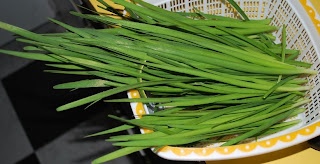 These old lithographs are genuine treasures. They were published at a time when growing orchids was a hobby for the wealthy, who could grow them in their own greenhouses. The key as to which orchid is what, is here in Wikipedia.
These old lithographs are genuine treasures. They were published at a time when growing orchids was a hobby for the wealthy, who could grow them in their own greenhouses. The key as to which orchid is what, is here in Wikipedia..jpg) Epiphyte house at Knypersley-Bateman
Epiphyte house at Knypersley-Bateman
The above lithograph is by Ernst Heinrich Philipp August Haeckel , a German biologist, this photo 1860 from wikipedia.
 Haeckel and his assistant von Miclucho-Maclay Canary Islands, 1866. From Wikipedia, "an eminent German biologist, naturalist, philosopher, physician, professor and artist who discovered, described and named thousands of new species, mapped a genealogical tree relating all life forms, and coined many terms in biology, including phylum, phylogeny, ecology and the kingdom Protista. Haeckel promoted and popularized Charles Darwin's work in Germany and developed the controversial recapitulation theory ("ontogeny recapitulates phylogeny") claiming that an individual organism's biological development, or ontogeny, parallels and summarizes its species' entire evolutionary development, or phylogeny." Which is still taught today. Also typical for learned men of his time, he had generic ideas that we now rightfully consider racist. I like to think that, if he lived today, he would have seen those ideas as profoundly flawed, while expanding on his evolutionary studies.
Haeckel and his assistant von Miclucho-Maclay Canary Islands, 1866. From Wikipedia, "an eminent German biologist, naturalist, philosopher, physician, professor and artist who discovered, described and named thousands of new species, mapped a genealogical tree relating all life forms, and coined many terms in biology, including phylum, phylogeny, ecology and the kingdom Protista. Haeckel promoted and popularized Charles Darwin's work in Germany and developed the controversial recapitulation theory ("ontogeny recapitulates phylogeny") claiming that an individual organism's biological development, or ontogeny, parallels and summarizes its species' entire evolutionary development, or phylogeny." Which is still taught today. Also typical for learned men of his time, he had generic ideas that we now rightfully consider racist. I like to think that, if he lived today, he would have seen those ideas as profoundly flawed, while expanding on his evolutionary studies. I especially like the illustrations that show the entire plant, roots, stems, leaves, and flowers, such as this Laelia speciosa by Bateman, in 1840. This drawing is one of my favorites, showing the roots attached to a branch, and the elegant form of the plant and its flower.
I especially like the illustrations that show the entire plant, roots, stems, leaves, and flowers, such as this Laelia speciosa by Bateman, in 1840. This drawing is one of my favorites, showing the roots attached to a branch, and the elegant form of the plant and its flower. Oncidium micropogon, from Curtis's Botanical magazine, 1887. A typical drawing for the series. These drawings could be used to identify the plants, even today, as well as a photo. Somewhere, I read that the flowers resemble local bees, and that on seeing them tremble in the wind, a bee becomes agitated and attacks the 'foreign invaders'. This attack leads to transfer of pollen, ensuring the next generation. I don't know if this scenario is accurate, but I do see the resemblence.
Oncidium micropogon, from Curtis's Botanical magazine, 1887. A typical drawing for the series. These drawings could be used to identify the plants, even today, as well as a photo. Somewhere, I read that the flowers resemble local bees, and that on seeing them tremble in the wind, a bee becomes agitated and attacks the 'foreign invaders'. This attack leads to transfer of pollen, ensuring the next generation. I don't know if this scenario is accurate, but I do see the resemblence.My collection contains one plant similar to this variety, but the 'bee mimicry' is less obvious.
 Oncidium longicornu, also from Curtis's Botanical magazine, 1842Any variety that I grow will doubtless be a hybrid, and also doubtless much easier to grow, compared to these freshly collected species plants. Even so, it's possible that my plants could be descended from these.
Oncidium longicornu, also from Curtis's Botanical magazine, 1842Any variety that I grow will doubtless be a hybrid, and also doubtless much easier to grow, compared to these freshly collected species plants. Even so, it's possible that my plants could be descended from these. Dendrobium nobile, from John Lindley's Sertum orchidaceum (1838-1841). Also from wikipedia, "It is one of the 50 fundamental herbs used in traditional Chinese medicine, where it has the name shí hú (Chinese: 石斛) or shí hú lán (Chinese: 石斛兰)."
Dendrobium nobile, from John Lindley's Sertum orchidaceum (1838-1841). Also from wikipedia, "It is one of the 50 fundamental herbs used in traditional Chinese medicine, where it has the name shí hú (Chinese: 石斛) or shí hú lán (Chinese: 石斛兰).".










